#not the movie about the 1950s lesbians but this show was 'Carol' the whole time I worked on it
Explore tagged Tumblr posts
Text
Carol & The End of the World is out now on Netflix


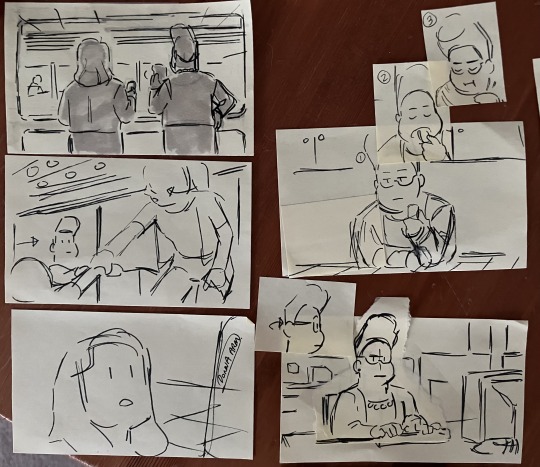
While I find my digital boards from 2021, here are some early post-it thumbs for Throuple. Great ep. Grep.
Carol is pretty much exactly the kind of adult animated show I wanted to work on and see in the world. Watching it in its completed state today – finally – I thought of a timeline in which this show was culled like so many others in this dark-ass era for the industry
I particularly love the episodes our team – Bert, Sam, Seo, and myself got to work on. They're all weird and arthouse-y but sweet in a way that's totally in my wheelhouse. Maybe this wasn't Dan Guterman's intention, but I don't think it's unfair to say that there's something of a Steven Universe-esque spirit to these eps, if that interests anyone here haha.
#carol & the end of the world#carol and the end of the world#carol netflix#not the movie about the 1950s lesbians but this show was 'Carol' the whole time I worked on it#storyboards#you can recognize my sequences from all the unnecessary 3 point perspective shots and weird upshots and downshots
690 notes
·
View notes
Text
Most courageous lesbians on TV
Izzie (Atypical)
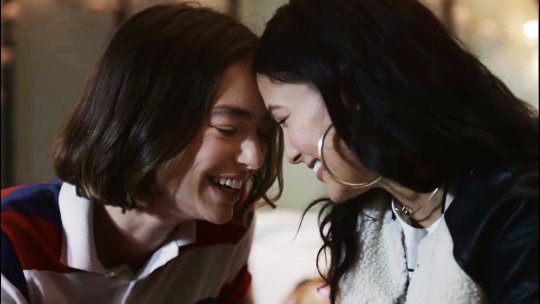
Izzie does, what no lesbian ever did or ever will do. She comes out to her bff who has a boyfriend, twice! First, she uses the “forehead promise” to show Casey her affection. Afterwards Casey, who obviously gets confused, ignores Izzie’s interest and makes out with Evan consciously obvious when Izzie is around.
Instead of hiding her gayness for the rest of her life, Izzie turns up at Casey’s night workout to finally confront her. Considering that Izzie has a bad relationship with her mother and only superficial friends besides Casey, she risks her only valuable relationship. Showing her love in her supposedly straight friend makes her pretty vulnerable. She really invests a lot here.
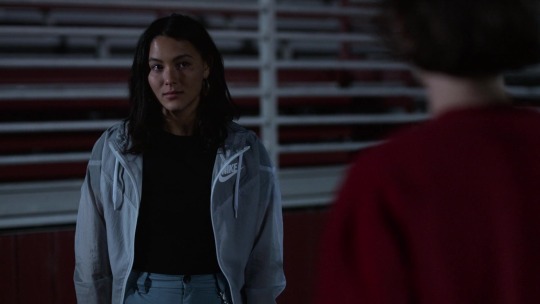
Gigi (The L Word Generation Q)
I think Gigi is the lesbian we all want to be and we all want to date. Her communication skills are phenomenal. I really hope, she and Dani will be end game, because this is the most beautiful relationship I have ever seen on the L word.

Gigi invests so much. She gives Dani tons of hints and of course Dani understands. However, she deals with her ex-relationship, her father’s legal problems and saving the company. It is not clear if Dani prefers a friendship or is ready to start a new relationship, but Gigi stays confident and straightforward.

Gigi is true to Dani about her feelings and she introduces her early to her family. This shows that Dani is not just a short adventure for her like the Throuple or Bette.

Emma Nolan (Prom)
I almost cried. What is going on with these people at Emma Nolan’s school? They throw two Proms, one for her and one for the rest of the school, because they hate lesbians. This is too tough, even for a teenager.

Emma is true about being gay while nobody else in Indiana is. Her girlfriend is deep in the closet, but still Emma comes out and fights for her right to dance with her at the Prom. She is a hero.
Laurel Hester (Freeheld)
Freeheld tells a true story from the early 2000′s. For me sometimes this time seems like yesterday, but Freeheld reminds me on why it was so tough to get out. It was really not the same time as now and a lot has evolved since then. Also the last 10 years really changed the world for gays. Laurel Hester was one of these heroes who changed the system and Julianne Moore was blessed to play her. I highly recommend this movie. Go watch it, if you haven’t yet.

Carol (Carol)
Carol is pure self-confidence! I mean, this is the 1950′s. Everyone is a homophobe and seriously, the way she flirts is so courageous. Of course this is fictional, because it never happens, even not now and not in 100 years from now. She meets someone who looks super stereotypically straight and who is engaged to some guy. Whatever, Carol is here and changes Therese’s whole life in a couple of seconds. What should I say.

Amy (Women love Women)
Amy is one of the few masculine lesbians on TV at all. It is 2021 and nothing has changed. We have Shane, we have Finley... they are both some kind of hybrid baby butch. I don’t know why movie and TV producers hesitate to show masculine lesbians, but they obviously do.
Amy lives in the 70′s and gets to know Linda in a lesbian bar. They start dating, but Linda’s friends confront Amy on her masculinity. They accuse her on not being a feminist because of her looks. Amy has to justifiy her appearance even around progressive gay women.

In my opinion, this is a unique story on TV. When I used to be part of the lesbian scene and went to parties at the weekends, I personally noticed this split of the lesbian community. I am not sure if it still exists.
Lily (Sex Education)
Tbh I am not that much interested in the story of Lily and Ola, but Lily is a true hero. I am a fan of musicals... and what did she do? I think her interpretation of Romeo and Juliet is the best musical anyone has ever directed. I would very much love to watch it live. It was the craziest party of vagina-something-alien-sex-octopus-music-pure art. I don’t know about art, but this was pure art and it was the best.

#sex education#lily iglehart#atypical#izzie taylor#casey x izzie#cazzie#the l word generation Q#gigi ghorbani#dani x gigi#gini#Lesbian movies#lesbian series#emma nolan#prom#netflix prom#laurel hester#Freeheld#julianne moore#carol#cate blanchett#women love women#chloe sevigny#sepideh moafi#lesbians
276 notes
·
View notes
Text
Favorite film discoveries of 2019
Every year, my new-to-me favorites list always shocks me in some way. This year, the sheer amount of movies made in the 2010s on display is INSANE by my standards. Of course, most of the modern movies here are throwbacks or tributes to older styles of cinema, so maybe it’s not that shocking in the long run.
Another running trend this year: movies that are old but not as dated as we would wish. Many of the older films here deal with xenophobia and political strife in ways that still feel shockingly prescient today-- the more things change...
ONCE UPON A TIME... IN HOLLYWOOD (DIR. QUENTIN TARANTINO, 2019)
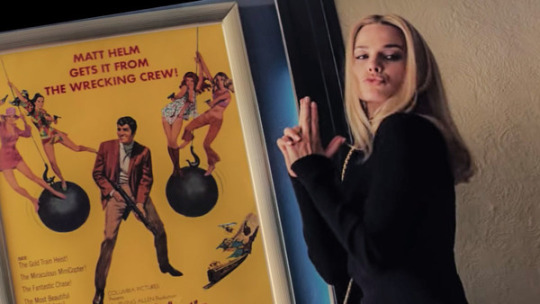
I never thought the day would come where my favorite movie of the year would actually be made after the 1970s, let alone by Quentin Tarantino. Then again, this movie is all about the end of Old Hollywood as well as a big love letter to the 1960s, so maybe it’s not that shocking a state of affairs. I adored this movie, the level of detail, the laidback yet elegaic vibe, the comedy and the relationships between all the characters. It was one of those movies where I loved even the scenes where nothing seems to be happening at all-- I mean, who knew Brad Pitt feeding his dog and watching TV could be entertaining?? But it is and I can't wait to see this one again!
INTENTIONS OF MURDER (DIR. SHOHEI IMAMURA, 1964)
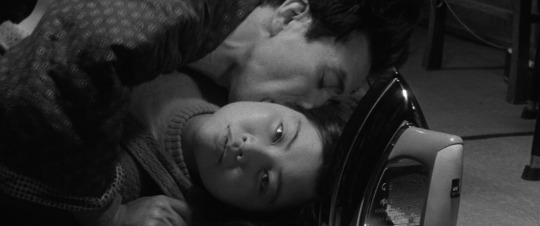
Intentions of Murder has an insane premise, one that runs the risk of being tasteless: a housewife in a miserable, exploitative marriage is raped by a sickly burglar during a home invasion. Even worse, she can’t shake him, as he’s suddenly infatuated and wants her to run away with him to the city. And weirder still: her current existence is so miserable that she’s TEMPTED. While abuse and rape are grim subjects for any story, Intentions is actually about a woman coming into her own and finally standing strong against all these men trying to use her. It’s a weird blend of drama and dark comedy, a truly savage satire on patriarchy and class-snobbery.
JOKER (DIR. TODD PHILLIPS, 2019)
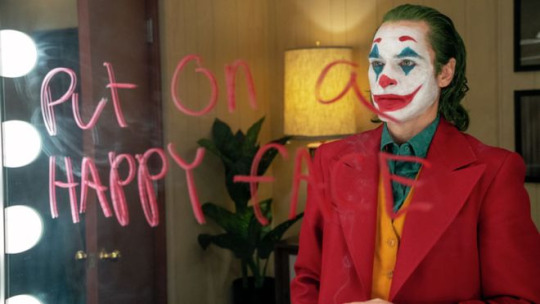
I went into this movie expecting to think it was overhyped and when I first left the theater, I was all ready to say “it’s good but not THAT good.” But it ended up haunting me for weeks afterward, and I found myself thinking about how everything just tied up so well together, from the grotty urban hellscape which serves as the setting to Phoenix’s brilliant performance. It reminded me a lot of A Clockwork Orange in how intimate it lets you get to this violent man while never pretending he is someone to be glamorized or imitated.
SIMON (DIR. MARSHALL BRICKMAN, 1980)
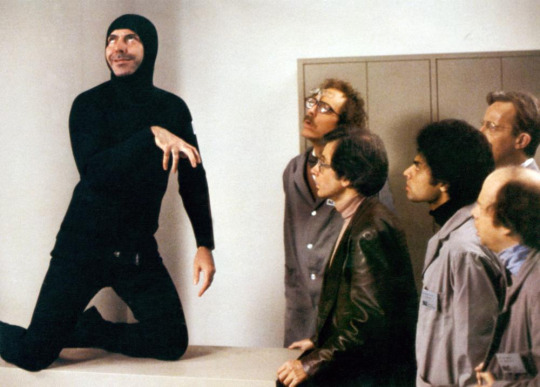
How do I even describe Simon? Alan Arkin is brainwashed by a group of overpaid intellectuals into believing he is descended from an alien toaster. Then he gets a messiah complex and starts gathering disciples as he rails against television, condiment packets, and muzak. It’s a little uneven at times, sure, but the satire is really inspired. The whole thing is like a combination of Mel Brooks, Stanley Kubrick, and Woody Allen’s styles, and it is quite hilarious for those who thrive on cult oddities.
PEEPING TOM (DIR. MICHAEL POWELL, 1960)
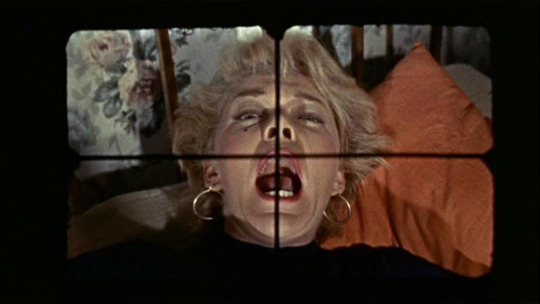
Though it came out the same year as Hitchcock’s Psycho and has been nearly as influential for horror cinema, Peeping Tom remains underseen by everyone save for film theorists. And what a shame that is, because this movie is more frightening than Psycho. Sure, that may be because Psycho is so predominant in popular culture and just so influential that it no longer has the same shock value, but there’s something about Peeping Tom that gets under my skin, something sad, even disgusting. I felt dirty after watching it-- and this is 2019!
MIDNIGHT MARY (DIR. WILLIAM WELLMAN, 1933)
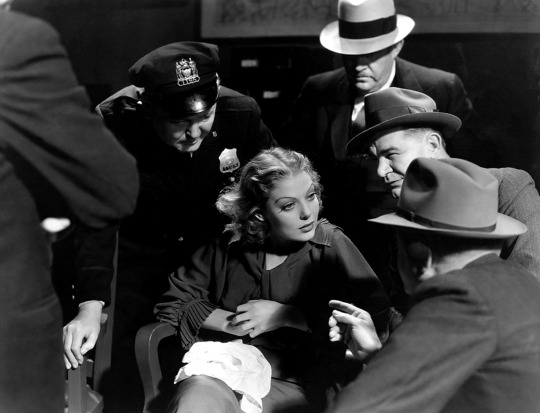
Loretta Young got one of her juiciest roles in this pre-code crime drama. Her Mary Martin is more than just a good girl forced into criminal circles-- she’s a complicated creature, compassionate and desperate and lonely and bitter and sensual all at once. This movie is a fast-paced, beautifully filmed ride, cloaked in that Depression-era cynicism that makes pre-code Hollywood of such interest to movie geeks the world over.
WILD BOYS OF THE ROAD (DIR. WILLIAM WELLMAN, 1933)
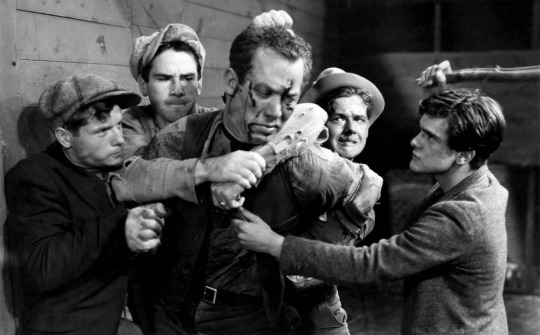
Wild Boys of the Road is a quintessential Depression-era movie, relentless in its bleakness and rage. That the main characters are all starving kids only looking for work makes their struggles all the harder to watch. William Wellman is quickly becoming one of my favorite directors: his gritty style and compact storytelling are just perfect for a ripped-from-the-headlines drama such as this. And the “happy” ending has one little moment that just knocks any smile you have right off your mug. Absolutely see this.
THE RUSSIANS ARE COMING, THE RUSSIANS ARE COMING (DIR. NORMAN JEWISON, 1966)
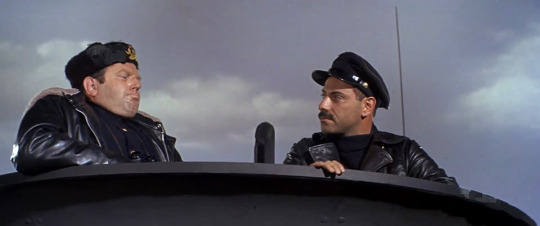
Sometimes, when you watch a movie only because a favorite actor is in it, you get subjected to pure trash like Free and Easy (oh, the things I do for Buster Keaton). Other times, you get cute gems like The Russians are Coming, The Russians are Coming, which, as you probably guessed, I mainly sought out for Alan Arkin. But the whole movie is hilarious, the best kind of farce comedy, populated by enjoyable characters and a sweet-tempered humanism that grounds the wackiness. While a little overlong, this movie is quite underrated-- and sadly, its satire of American xenophobia and Cold War panic is not as dated as we would like to believe.
ALL THE PRESIDENT’S MEN (DIR. ALAN J. PAKULA, 1976)
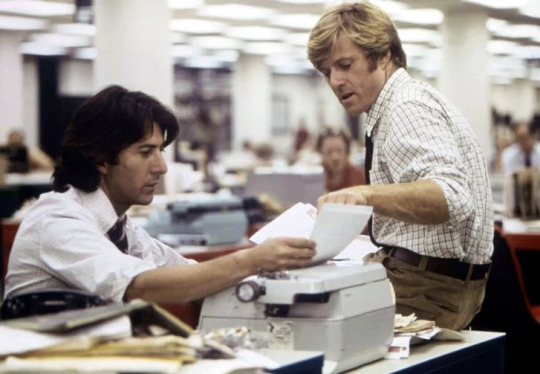
Who knew a political thriller where most people know the twist could be so intense and riveting? It’s about as nonsensical as feeling suspense when you watch a movie about the Titanic and hope the boat won’t sink-- but damn, it’s magical. All the President’s Men is real white-knuckle stuff, with Robert Redford and Dustin Hoffman projecting both youthful excitement and deep panic as they proceed with their investigation. It scarcely seems to have aged at all.
WHISPER OF THE HEART (DIR. YOSHIFUMI KONDOU, 1995)
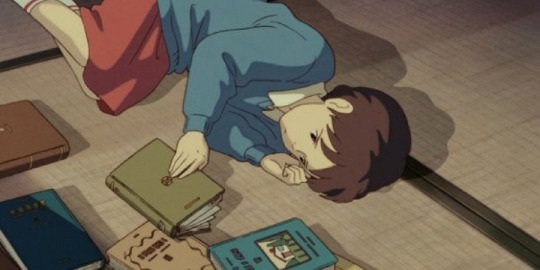
There’s a scene near the end of Whisper of the Heart where the protagonist Shizuku shows the finished first draft of her fantasy novel to her first reader, the grandpa of one of her schoolmates. She weeps because it isn’t the perfect image she had in her head, despite how hard she worked on it, but the old man tells her that it takes polishing and discipline to make the work come to its full potential. Few movies about artists are so honest about how hard it can be, how unsupportive others can be in their demand that everyone be “practical.” As a writer who struggles to create and constantly doubts herself, this movie spoke strongly to me. I recommend it to any creative person.
THE PHANTOM OF THE PARADISE (DIR. BRIAN DE PALMA, 1976)
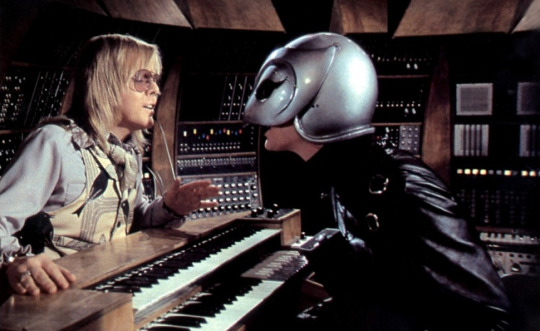
I’d been wanting to see this movie since my high school phan days. Holy crap, is it WEIRDER than I could have ever imagined, a true camp masterpiece. I’m shocked it was never tuned into a stage show actually, but then again, we would miss those trippy camera angles and we wouldn’t have Paul Williams as one of the greatest villains of all time.
DUEL (DIR. STEVEN SPIELBERG, 1971)
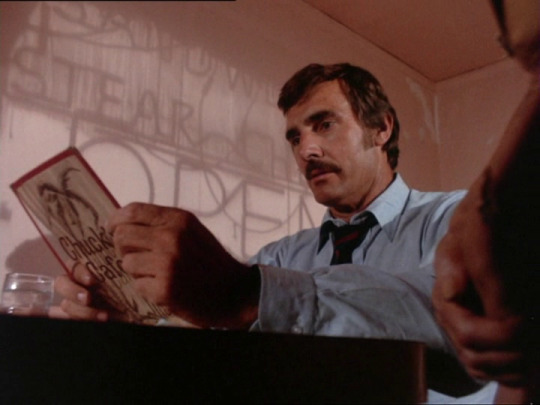
When people talk about the best movies made in the “Hitchcock without Hitchcock directing” tradition, why is Duel so seldom mentioned? The scene in the cafe, packed with paranoid tension and tense camerawork, alone should qualify it. Duel is most known as the movie which put the young Steven Spielberg on the map. It’s quite different from his later work, grittier and less whimsical for sure. Even the ending seems almost nihilistic, depending on how you view it. But damn, if it isn’t fine filmmaking.
CAROL (DIR. TODD HAYNES, 2015)
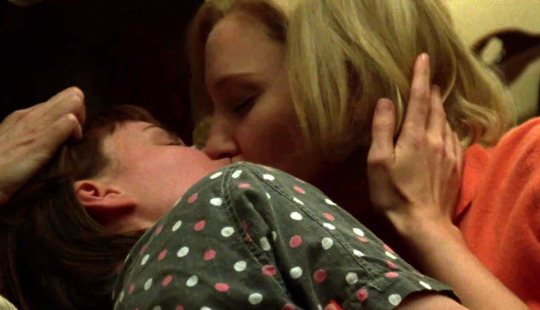
This gorgeous throwback to Douglas Sirk melodramas is also one of the best romantic movies I’ve seen in a while. Cate Blanchett and Rooney Mara have the sweetest, tenderest chemistry-- it was like seeing Lauren Bacall and Audrey Hepburn as love interests in a film. Unlike Sirk, there is little in the way of ripe melodrama here-- everything is underplayed, aching, mature. And I can say this is an adaptation that is better than the source book: it just feels so much warmer.
12 ANGRY MEN (DIR. SIDNEY LUMET, 1957
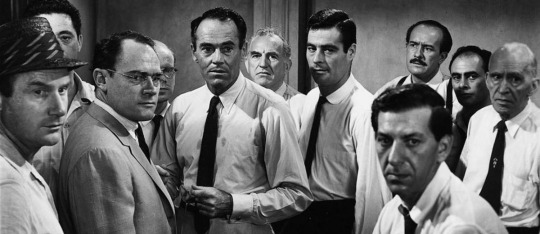
All I can say is that this was every bit equal to the hype. Common movie wisdom says people sitting and talking in a room is going to be boring on film, but movies like 12 Angry Men prove this is not so when you’ve got an excellently tense atmosphere, an inspired script, and a stable of fine actors to work with. Like The Russians are Coming, the Russians are Coming, this movie has not significantly aged-- much to society’s discredit.
A STAR IS BORN (DIR. GEORGE CUKOR, 1954)
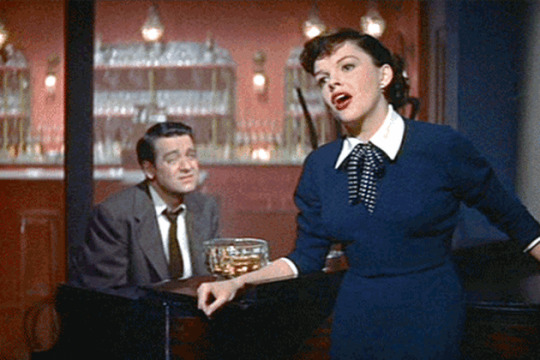
Another movie I went into not expecting to love as much as I did. When movies from the 20s or 30s tended to get remakes in the 1950s, I always find them too garish and big, victims of glossy Cinemascope and overlong runtimes. Compared to the lean 1937 classic original, I expected sheer indulgence from this three-hour remake. Instead, I got my heart torn out all over again-- the longer runtime is used well, fleshing out the characters to a greater degree. Judy Garland and James Mason both give what might be the best efforts of their respective careers, and the satire of the celebrity machine remains as relevant and scathing as ever.
BLANCANIEVES (DIR. PABLO BERGER, 2012)
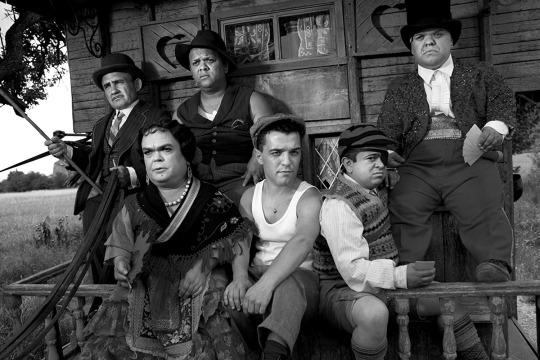
Oh, it feels like this movie was made for me specifically. It’s shot in gorgeous, expressionistic black-and-white. It’s set in the 1920s. It’s a clever adaptation of a classic fairy tale. It’s as funny and charming as it is bittersweet and macabre. Instead of more superhero movies, can we get more neo-silent movies like this? PLEASE?
THE FAVOURITE (DIR. YORGOS LANTHIMOS, 2018)
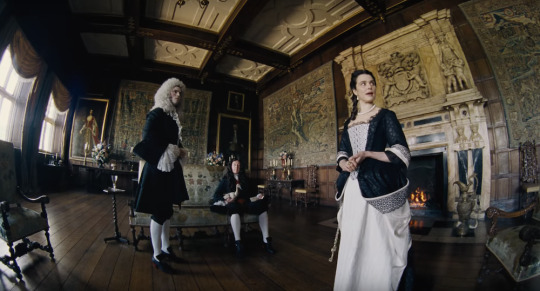
I’ve heard The Favourite described as a “bitchy lesbian Shakespeare play,” but this description, while a little true in terms of general tone, does not get to the heart of what makes this film brilliant. More than love or sex, this movie is about power-- particularly the corrupting influence of power. And it corrupts not only morals but love itself. Innocents become Machiavellian schemers. Lovers become sadomasochistic enemies. Good intentions turn to poison. This certainly isn’t a happy movie, but it is moving and, strangely enough, also hilarious. I was reminded of the chilly, satirical world of Kubrick’s Barry Lyndon more than once-- and for me, that is not a bad movie to be reminded of.
ON THE WATERFRONT (DIR. ELIA KAZAN, 1954)
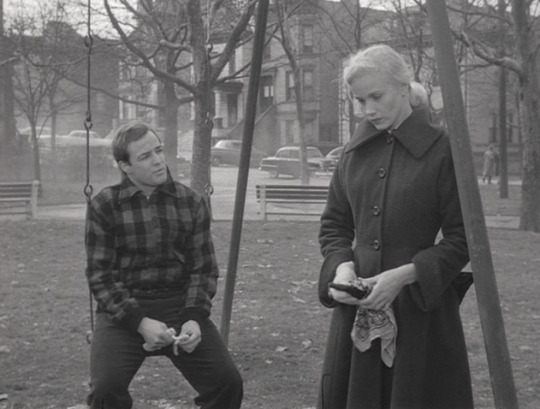
Another classic that’s been on my list forever that I was delighted to find worthy of its reputation. It’s a classic tale of redemption and social justice, perfectly acted and shot. While I still prefer A Streetcar Named Desire as far as Kazan is concerned, this might be a better movie in the objective sense. Actually, more than even Brando, Karl Malden is the acting highlight for me-- he plays a priest torn between staying silent or truly speaking for the Gospel by demanding justice for the poor parish he serves. Just brilliant work.
KLUTE (DIR. ALAN J. PAKULA, 1971)

A perfect thriller, just about, and a great example of the “NYC is hell on earth” subgenre of the 1960s and 1970s. Jane Fonda is a revelation: she feels so real, not at all like a starlet trying to seem normal if you know what I mean.
KISS KISS BANG BANG (DIR. SHANE BLACK, 2005)

As far as subversive noir goes, this is the most entertaining. I would put it up there with The Big Lebowski as far as goofy takes on Raymond Chandler are concerned-- I don’t even really know what to make of it, but I laughed my ass off anytime I wasn’t going “WHAT???”
What were your favorite film discoveries in 2019?
#thoughts#peeping tom#simon 1980#kiss kiss bang bang#intentions of murder#once upon a time in hollywood#joker#a star is born#blancanieves#the russians are coming the russians are coming#all the president's men#whisper of the heart#carol#the favourite#12 angry men#klute#the phantom of the paradise#on the waterfront#wild boys of the road#midnight mary#duel
151 notes
·
View notes
Text
February 17, 2021: Desert Hearts (1985) (Part 1)
You may be asking...why not Blue is the Warmest Color?

And I know, I KNOW, I really really need to watch that one. But, honestly...I find Desert Hearts more intriguing, and you’ll have to hear me out on this one.
Desert Hearts is both SUPER goddamn slept on, and has one of the biggest increases of opinion in post-release critical reviews. It’s a part of the Criterion Collection, it’s on HBO Max, it’s considered one of the great romances (LGBT and otherwise) of all time, and it’s also, most importantly, THE FIRST major release lesbian movie ever released in the USA.
And also...I HAVE NEVER GODDAMN HEARD OF IT BEFORE.
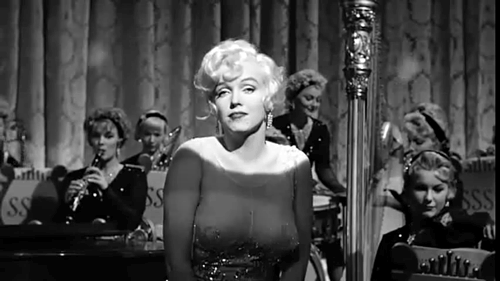
And I 100% should’ve heard of this movie before, right? I mean, to be fair, when I was looking up KGBT movies to put on my list, I saw a HELL of a lot of prominent movies that I’d never heard of, including this one. But even then...nothing? I’d heard of Brokeback, CMbYN, Carol, BitWC. But this one? I’m interested, that’s for damn sure.
Oh, also...to be honest, BitWC is THREE HOURS LONG, and I only have so much time in the day today. SO, all of that said, shall we get into some Desert Hearts? Also, I love that name, I’m not gonna lie. Anyway, let’s bring more attention to this movie, huh? SPOILERS AHEAD!!!
Recap (1/2)
By the way, before we start, you might be wondering my opinion on the Criterion Collection.

If you’ve never heard of the good old CC, it’s a company that remasters and distribute films considered to be “culturally important.” Now, granted, it’s not perfect (I genuinely think The Avengers or another similar film should be on there, but I think that’s actually a licensing issue), but the over 1,000 films on there create one complex filmography, I tell you what. And if you have HBO Max, a lot of them are on there. Here’s a list!
It’s got a hell of a collection, and while I don’t think it’s perfect, it’s definitely an interesting indicator of what’s considered important classics. But that said, here’s something CRAZY. This movie, and BitWC are both on there...Brokeback Mountain isn’t. WHAT THE FUCK, RIGHT? So, yeah, probably a little bit of bullshit there, too. Not as bad as the Oscars, though, so I’ll take it.

In the 1950s, a train pulls into a desert station in Reno, Nevada. Out of that train steps Vivian Bell (Helen Shaver), a professor coming from New York City. Recently divorced, she’s picked up by Frances Parker (Audra Lindley), who owns a ranch that Vivian will be staying on.
As they drive to the ranch, we meet her daughter, Cay Rivers (Patricia Charbonneau), a wild girl who’s driving backwards on the road, and is FAR better at it than I’d ever be, I’ll tell you that. As she leaves, Vivian professes that she’s feeling a need for privacy, as she’s never lived outside of a city, and this is a tough time for her in general. She settles in at the ranch.

Meanwhile, at a casino in town, Cay is working and spending time with her friend Silver (Andra Akers), who’s recently engaged and pregnant. A change attendant there, she’s been dating her boss Darrell (Dean Butler), although she doesn’t seem like a big fan of the idea. At home, she’s an aspiring sculptor.
We find out a bit more about Cay and Frances’ relationship, as she’s actually Frances’ stepdaughter, via her late husband Glen, her biological father. As she recounts her lamented past relationship (with the help of Jack Daniels), Vivian seems to comfort her a bit, and also relaxes.

The next day, we get to see that the ranch is apparently full of recent and aspiring divorcees, who are staying here to subsist through the whole process and get away from their former husbands. Walking into the middle of an uncomfortable conversation involving sex, Vivian quickly volunteers to deliver mail to Cay’s cabin.
Once there, another fact is confirmed for us: Cay is indeed a lesbian. And suddenly...I seeeeee. It’s a reverse Carol! Instead of the older self-affirmed lesbian in love with the naive young woman still learning about herself and her desires, we’ve got the young self-affirmed with older naivete. Iiiiiiiinteresting.

That seems somewhat confirmed through some longing glances from Cay towards Vivian. But that’s wiped away via a cross-face wipe, as Vivian’s offered a ride into town with Cay and her friend/lover Gwen (Gwen Welles), which definitely makes Vivian a bit uncomfortable. As a reminder, this is the 1950s, so her discomfort isn’t crazy.
In town, Vivian visits her divorce lawyer, and we find out that she’s...35? REALLY? Upon further inspection, the actress was actually YOUNGER, and I gotta say, the way her hair is and how she dresses...yeah, legit though she was in her 40s. That’s also based off of her VERY husky quiet voice. Just saying, it’s a surprise!
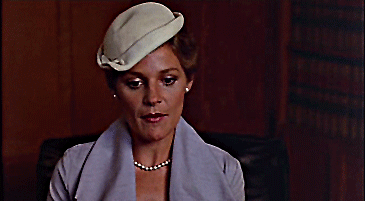
Meanwhile, at work, Darrell tells Cay how much he loves her, and Cay isn’t interested. But despite her OBVIOUS lack of interest, Darrell doesn’t know how to take no for an answer.
That night, both Cay and Vivian are getting a midnight snack, with Vivian being a teensy bit drunk, and considerably more lonely. As Cay offers her ear, Frances wakes up and asks Cay for a soda. While there, she reveals that the ranch is not doing well, and she may sell. She’s also quite devoted/dependent on her, and she’s, uh...FUUUUUUUCK, she’s not doin’ well.
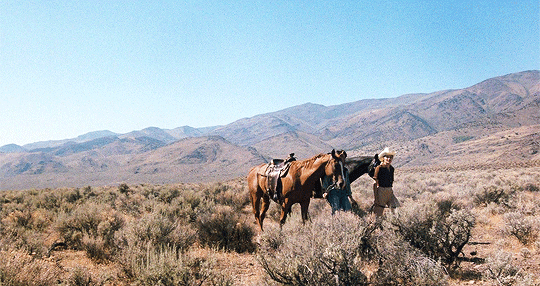
The next morning, Vivian and Cay go out on a horse-riding trip, where they grow a little closer. On a later hangout with Silver, Cay confirms that she’s interested in Vivian romantically, and she’s formed an adorable schoolgirl-style crush on her. But the complication involved here is that Vivian will eventually leave, and Cay is basically stuck there, with her stepmother.
Frances and Vivian are watching a movie together that night, and Frances seems to be trying to dissuade Vivian from becoming too attached. However, that definitely doesn’t stop her, as the two spend more time together, and she even meets Silver. Darrell shows up to this little excursion, and is a diiiiiiiiiick.
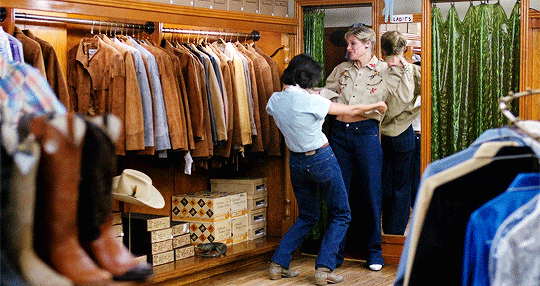
That action may have had some...unintended consequences. Soon after, everybody’s eating breakfast at the ranch, when Vivian notes that she isn’t going to Silver’s engagement party, as she only has a week-and-a-half left there, and must prepare lectures (I feel that, goddamn). This makes Cay upset, and she wonders aloud if Darrell’s comments “put her off.”
THAT causes Frances to intervene, causing Cay to react angrily to her, causing her to leave, then causing Vivian to leave, and THEN causing Frances’ son Walter (Alex McArthur) to follow after to ask what’s wrong. Vivian notes as they walk together that Frances seems resentful about Cay’s friendship with Vivian. And Walter (a REALLY nice guy, by the way), admits that Frances wants Cay all to herself. The two of them also become friends by the end.

OK, good place to pause, since we’re at the halfway point. See you in Part 2!
#desert hearts#donna deitch#jane rule#helen shaver#patricia carbonneau#audra lindley#andra akers#gwen welles#dean butler#romance february#romance movie#LGBT films#LGBT film#user365#365 movie challenge#365 movies 365 days#365 Days 365 Movies#365 movies a year#usercande#vivian bell#cay rivvers
3 notes
·
View notes
Text
Beatrice Lillie: Get Her
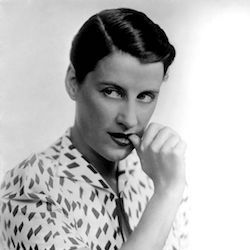
When it is said that someone lives in their own world, it is often not meant kindly or admiringly, but Beatrice Lillie lived and worked very much in her own world like a child does at play, seemingly impervious to outside reaction or convention. If you “got” her no one was funnier, and in her heyday she was actually billed as ���The Funniest Woman in the World,” all by herself. Why is someone funny, especially if you are not an easy laugher? Because of an element of surprise, or the swift introduction of something unexpected, and Lillie’s comic style was nothing but unexpected, aberrant, capricious.
She was born in Canada in 1894, and she started performing early with her mother and her sister Muriel. Lillie’s mother would sometimes sing an “art” song called “There Are Fairies at the Bottom of Our Garden,” and later on Lillie was persuaded to try the “Fairies” song for laughs, as can be seen in an appearance on The Ed Sullivan Show in 1952. When she sings, “And the queen, well can you guess who that may be?” the word “queen” comes out as “kuh-ween,” and Lillie is the ultimate in pansy flair here, using a feather fan as a self-delighted child would.
Lillie had her hair cut short in the 1920s and kept it that way, and she often did trouser roles on stage in the 1910s for her showman mentor André Charlot because most of the male actors were off fighting in World War I. On the cover of the album Thirty Minutes with Beatrice Lillie, she is turned to profile with this severe brush cut and looks very chic lesbian, but she had several male lovers. In 1920 she married a tall man named Sir Robert Peel, and so Lillie could call herself Lady Peel for the rest of her life, mainly for a gag. Peel was a gambler who put her deeply in debt by the time of his death in 1934, and so she had to keep working and commanding large fees on stage to pay these off. Her son with Peel, who was also very tall and good-looking and named Robert, died during World War II, and her anguish over this is made clear in her autobiography Every Other Inch a Lady, which was published in 1972.
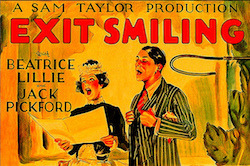
Lillie appeared regularly in revues in the theater, and she made a film debut in Exit Smiling (1926), in which she plays Violet, a drudge-of-all-work behind the scenes in a repertory theater company who wants to play a vamp on stage and gets to dress up in male clothes to threaten the leading man of the troupe, played by swish expert Franklin Pangborn. The gender signifiers are all over the place here, and Lillie gets her laughs with some physical comic business and even gamely sells an unrequited love theme when Violet falls for a young actor (Jack Pickford).
Lillie did a sketch with Frank Fay in The Show of Shows (1929) where Fay keeps interrupting her as she tries to speak about a girl who was a “sailor’s delight,” and here she utilizes one of her sharpest weapons: the unexpected pause. Her lost feature Are You There? (1930) seems to survive only as a few songs without picture, but that was a perfect title to express her restless weirdness. It isn’t easy sometimes to get on Lillie’s wavelength in what remains of her work, but then that was always the case; you either “get” her or you don’t, and “Get her!” was her favorite camp phrase.
In the Bing Crosby picture Doctor Rhythm (1938) she plays Mrs. Lorelei Dodge-Blodgett, a society woman who does Lillie’s noted “One Dozen Double Damask Dinner Napkins” routine with Franklin Pangborn. At 44 here she is dry and naughty-ish and hard and oblivious, and some of her effects are clearly long-practiced and set, yet the result is fresh because she seems so easily bored and prone to yawns. She gets some of her biggest laughs by acting suspicious at random, which is why everything she said or that people said around her began to sound like a double entendre. Lillie often seems demanding, but demanding what?
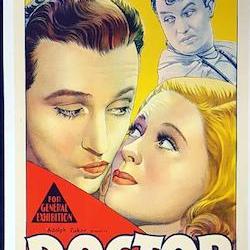
Her face says, “Now, no nonsense!” and yet she is pure nonsense, and such purity can be more than a little intimidating. She wears “funny” clothes and carries a bent walking stick in Doctor Rhythm, but these are superfluous because it is Lillie herself who is bent. When Kenneth Tynan profiled her in the 1950s, she told him that maybe people laughed at her because of her nose, as if searching for a simple explanation. Tynan himself felt that Lillie wanted to do without language entirely, which is the point of her dinner napkin routine where she makes comic hay out of “danner nipkins” and “nanner dimkins.” It is easy to imagine Lillie playing with dolls for hours, or getting caught in the revolving door of a hotel and staying in there for a half hour because she liked it, just as Zelda and F. Scott Fitzgerald once did.
On Approval (1944) is her masterpiece, and it is shared with her co-star and director Clive Brook. On Approval is not just a film that Lillie is in, as her others are, but a real Beatrice Lillie film that seems to take its irreverent tone from her. It mines the recent past (the 1890s) for laughs, and it is high comedy, whereas Lillie herself was neither high nor low but somewhere off to the side. Her Maria Wislack makes jokes and waits for her laughs as Beatrice does in Much Ado About Nothing, and she keeps saying the non-word “Ho!” as an all-purpose exclamation until the film itself takes her up on it and becomes obsessed with it. Maria has a managing and bossy manner, but she is very silly underneath, and this is a strange combination.
The height of Lillie’s art on screen comes in the way On Approval has the 41-year-old Maria at the piano singing a song that begins, “I’m just 17, and I’ve never been” only to cut her off to show other cast members before going back to her singing “I’m just 17” twice, and then making us wait quite a while until she goes back to the piano and finally sings the whole first line: “I’m just 17, and I’ve never been, to any stately ball!” The visual nightmare towards the end of that film suits Lillie’s sensibility perfectly, especially when she is done up in Grecian garb and holding poses.
It seems a shame that Lillie didn’t make a few more films as a friend to screwball comedy heroines of the 1930s, or maybe an appearance or two in some Warner Brothers adventure movies of the 1940s (imagine Bea confronting Bogart) or some specialty cameos in Technicolor MGM musicals. She stuck to the theater and capped her career with a show called An Evening with Beatrice Lillie in 1952, for which she won a Tony award and which she toured in extensively. Lillie did many of her best songs here, including the very camp “Maud,” where she talks to a female friend about how she and their set are all “rotten to the core,” and the Ivor Novello ballad “There are Times,” which she sings fairly straight.
By the 1960s, Lillie’s wits were getting fuddled by Alzheimer’s disease, but she appeared as Madame Arcati in High Spirits, the musical of Noel Coward’s Blithe Spirit, and she was the wicked Mrs. Meers in the heavy-going musical hit Thoroughly Modern Millie (1967), where she is finally vanquished by another camp performer of a very different stripe, Carol Channing. Lillie lived for over 20 years more after that, but in decline, and she was cared for by her long-time friend and companion John Philip Huck, who died the day after she did in 1989.
Her memory has been perpetuated by Bruce Laffey, who wrote a book about Lillie and his friendship with her, and John Ellis, who has lovingly presented all manner of droll Lillie-ana on YouTube and elsewhere. The meaning of Lillie’s life and art might remain obscure or at least hard to pinpoint, but that’s the fun of her, and the danger too, for she had an edge that admitted only initiates for play.
by Dan Callahan
2 notes
·
View notes
Text

Any industry has a code by which it operates. At its’ birth and during its’ infancy, any new industry or undertaking operates like a frontier town in the old West – laissez-faire and making and/or breaking rules as they go. At some point, however, any industry, for better or for worse, will regulate itself for a whole range of reasons. It could be to improve productivity, to regulate problems that have emerged, to establish some sense of order or because of pressure from government and society standards.
Hollywood, both literally and metaphorically, was like a frontier town in the old West. Ambitious men and women decided to determine their own paths in the world of entertainment, when they headed West from the U.S East Coast in the very early 20th century. The new film industry which emerged heralded a new type of entertainment which audiences clamoured to see in darkened theatres, not only in the U.S but across the world. But with success came a demand for change in how Hollywood operated. The reasons for that change include some of the reasons already mentioned.
Scandals and outrage in Hollywood emerged in the 1920s to shock people around the world and the studios’ concerns were not that their stars had engaged in pre-marital or same sex encounters, were gay or lesbian, used drugs, drank alcohol (think Prohibition) or had affairs. However, they were concerned that audiences would be outraged if they found out that their favourite stars were and turned away from the movie houses. More importantly, powerful conservative voices, including the Catholic Church, politicians and others were concerned that the subject matter in films would corrupt America’s youth, erode morals and values and cause civilisation to collapse. As Gregory Black points out, those conservative voices had managed to recruit millions in their cause and the threat of losing audiences, particularly in the midst of the Great Depression was all too much. Better that the industry regulate itself and keep control, then hand it over to someone else and lose autonomy.
As a result, a ‘film code’ was introduced which would tell the studios what they could and could not depict or infer on screen. From the sublime to the ridiculous, this Code was to assure that civilisation would not go off the deep end. However, it would not truly be enforced until 1934 when Joseph Breen came to the helm of regulating the film industry. Censorship perhaps but also the reality that Hollywood had to deal with.
Censorship can be an abhorrence and stifles, crushes and blunts creativity and freedom of thought. Yet the Breen Code did encourage a new creativity not because that was the key aim of the new Code but because film makers took the initiative. The fact is; they had to. What emerged was, as Thomas Doherty in Pre-Code Hollywood states, the ‘much vaunted golden age (which) began with the Code and ended with its’ demise’.

This article does not intend to outline what the Code was and how it operated. For the record, I am not an apologist for the Breen Code nor an expert on it. Nor am I a particular fan who believes the Breen Code was one of the best things that happened to cinema. However, it did create a platform for the studios – and writers, producers and directors in particular – to find new and other ways to tell their stories. To borrow a phrase from Martin Scorsese, some had to become ‘smugglers’, finding creative and interesting ways to make movies. In some ways, new genres, sub-genres and stylistic techniques were born from the enforcement of the Breen Code.
The screwball comedy was certainly born from the fallout of the Code’s enforcement. Sexual tensions, premarital sex and adult relationships were now under the microscope of the industry watchdog and had to be either avoided or be very carefully approached. However, the screwball comedy found a beautiful way around this; through the use of humour, sophistication and wit, and a chance for actors and actresses to broaden their appeal as well as their abilities. Actresses such as Myrna Loy, Carole Lombard and Jean Harlow broke the stereotypical roles they found themselves in up to that point (which arguably accentuated their physicality more than anything else) and gave them a chance to expand their repertoire and become some of the most loved stars of the 1930s. For Myrna Loy, it would be The Thin Man series, as well as some wonderful pairings with Clark Gable and William Powell. Lombard would display her talent for comedy and Jean Harlow likewise.
Recently, I reviewed Libeled Lady (1936) with the MGM powerhouse cast of Loy, Powell, Spencer Tracy and of course Jean Harlow. As I mentioned in the article, the plot is nonsensical and would be impossible to sustain, without the sharp dialogue, charismatic presence of the stars involved and high production values. At the end of the day, the film is much farce as it is screwball, and the whole point is to simply enjoy the comedy and watch glamorous people fall in love. By the late 1930s and early 1940s, the screwball comedy would become an institution of the cinema, with stars such as Cary Grant, Katherine Hepburn, Irene Dunne, Fred MacMurray and Rosalind Russell, leaving a new and indelible mark on screwball comedy. For Katherine Hepburn, who by the late 1930s was called ‘box office poison’, films like The Philadelphia Story gave her a chance for revival and a rebirth of her career.


Like the Thin Man films, Libeled Lady is as much about sexual roles as roped in sexuality. The couple can match each other in every way; sophistication, glamour, wit and panache. The earlier Pre-Code films were grittier and at times even cynical regarding sexual powerplays and dominance in sexual roles. Yes, the strong, feminist tropes that emerge in Pre-Code films are fascinating and perhaps the challenge to traditional roles and sexual dominance is what also scared stake-holders into pushing for a film code.

But strong women emerged after the Code as well. As time went on, there was the development of ‘women’s pictures’ for which artists such as Bette Davis would make their mark and assure their stardom. Interestingly, enough Joan Crawford – perhaps one of the most enduring stars who transformed successfully from flapper to the Pre-Code to the Breen Code – would survive being called ‘box office poison’ (like Hepburn) and re-emerge as a star in ‘women’s pictures’.
Actors such as Clark Gable cemented his stardom and showed his comedic chops in his Oscar winning performance in It Happened One Night, the film which established the screwball comedy and garnered in a new age of sophisticated comedy. The film still stands as one of Hollywood’s most loved films. It deftly dealt with sexual tension, the concept of ‘opposites attract’ and a host of other relationship obstacles with some unforgettable and hilarious moments. The two stars never even shared a kiss yet audiences had no problems with watching the couple fall in love, without an embrace. Getting back to Clark Gable, the role of Peter Warne also gave him a chance to break from the typecast tough-guy/heavy and ‘gigolo’ roles which had defined his career in the Pre-Code era.

There is a strong argument that none of this would have occurred without the establishment of the Breen Code.
To point, studios discovered and developed a new way of telling stories about love, romance and relationships – even illicit relationships. True, they had to be careful but it meant that a sophisticated and witty film genre was formed, which audiences fell in love with.
Additionally, the gangster film had truly taken form during the Pre-Code era, with tropes, characterisations and storylines firmly in place. But the Breen Code challenged those tales and auteurs who found new interpretations and channelled their efforts into expanding on the genre. Warner Bros, home studio to the best of the gangster pictures of the 1930s, were particularly adept at doing so, taking the gangster story far beyond the ‘rise and fall’ plot to looking at social issues that had shaped the gangster and the neighbourhood that they had arisen from. Indeed, the themes and plot that had defined the gangster film in the early 1930s were almost cliched before the Pre-Code days were over; so much so that even E.G Robinson parodied his Little Caesar role in The Little Giant (1933). Time, changing values and the events of history would see the end of the ‘classic gangster cycle’ by the end of the 1930s, not so much the establishment of the Code. Yet Hollywood used the gangster story to reveal social ills and the plight of the underprivileged in films such as Dead End (1937) and Angels With Dirty Faces (1939).

Considering social issues, the Breen Code certainly didn’t blunt the sharpness of how film portrayed those issues, particularly in films such as The Grapes Of Wrath (1940). Corruption and apathy in government and the concerns over the rise of fascism found a powerful and still poignant voice in the films of Frank Capra, such as Mr Smith Goes To Washington (1939) and Meet John Doe (1941). Perhaps still one of the most films on politics, All The King’s Men (1949) seems just as relevant today as it did in the post-war period. The Breen Code in some ways had film-makers thinking beyond the scope prior to 1934.

Another interesting result of the Breen Code was that ‘wholesome’ family pictures began to boom at the box office. It becomes almost unfathomable that in the space of a year, Shirley Temple would take over from Mae West as the biggest star at Paramount. Yet family films lifted box office receipts and the impact of the Great Depression on the industry began to wane. Musicals became something the whole family could enjoy and their popularity would continue into the 1950s, expanding on the way that stories were told, as well as the stories themselves. The great literary classics of the past had always been appropriated and interpreted for the screen since the earliest days of film but now they became even more prominent. MGM were particularly adept at presenting the classics on film with top-notch production values and the use of their biggest stars in films such as David Copperfield (1935), A Tale Of Two Cities (1935) and Pride And Prejudice (1940). Other studios and producers would also bring literary classics to the screen such as Wuthering Heights (1938) and a remake of The Hunchback Of Notre Dame (1939) that arguably outdoes the original 1925 version. True, some of the deeper and darker themes were sanitised but these great stories were brought to the screen.
Historical events and figures, even the mythical ones would also become fodder for the studios and result in some of cinema’s most loved classics; The Charge Of The Light Brigade (1936) and The Adventures Of Robin Hood (1938) are but two examples of such classics. The aforementioned Clark Gable would star as Fletcher Christian in Mutiny On The Bounty (1935), a huge hit for MGM and a further opportunity for Gable to extend his abilities and move beyond the roles he was caught in during the Pre-Code era.


The Breen Code would provide many challenges to the film industry in the stories that would be told, as well as how they would tell them. Eroticism had been heavily draped but could never be completely covered – instead it simmered. The horror film still sent shivers down the collective spine of its’ audience and indeed found greater depth and expression, particularly evident in the films produced in the 1940s at RKO in the Val Lewton unit. Despite the limitations of budget, Val Lewton was able to produce some of the most memorable supernatural thriller and horror films of the 1940s, with storylines and thematic concerns that went far beyond what was being told elsewhere. And eventually, crime and mystery would find a deeper expression in film noir, which again worked best with subtleties and richer subtexts than explicitness.

The Breen Code may have presented Hollywood with a whole range of problems and by no means was it a ‘godsend’ which ‘saved’ cinema nor ‘cleaned up’ Hollywood. There are certainly levels of hypocrisy and fault in the Code, which have been dealt with elsewhere. Yet the Breen Code did see, as Doherty describes, ‘an artistic flowering of incalculable cultural impact’. The industry was able to maintain some semblance of ownership over itself, even if it did have to succumb to the personal viewpoints of Joseph Breen. It gave Hollywood the boundaries in which it could express itself but it also gave opened up new possibilities in expression.
Paul Batters teaches secondary school History in the Illawarra region and also lectures at the University Of Wollongong. In a previous life, he was involved in community radio and independent publications. Looking to a career in writing, Paul also has a passion for film history.
The Breen Code and its’ impact on Hollywood Any industry has a code by which it operates. At its’ birth and during its’ infancy, any new industry or undertaking operates like a frontier town in the old West – laissez-faire and making and/or breaking rules as they go.
0 notes
Link
When Queerness Is Cultural Capital, Lesbians Go Broke. June 27, 2017 There’s a video going around social media this Pride month: the ABCs of the LGBTQA. It says “those six letters will never be enough…” while smoke in every color of the rainbow swirls around a multicultural dance troupe. The video, produced by an expensive gym franchise, is further proof that Pride has been fully co-opted by identity capitalism. A is for ally, aka a straight person who identifies as woke. E is for exhibitionist. H is for heteroflexible. K is for kink. What I learned from this abecedarian of narcissism is that LGBT didn’t include enough people, so we added literally everyone else. We are witnessing an interesting cultural trend of inclusion so radical that it demands a catchall (I know I don’t have time to list out those 26-to-infinity letters): queer. What this viral Pride season commercial illustrates is that queer identity is about more than who you love or fuck. There’s no requirement to be homosexual, just to be open-minded. This whole thing is less about “labels” and more about the lifestyle attached to sticking a “Love is love” sign in your front yard. How did we get here? How did queer go from a slur, to a political slogan, to an identity, to this purposefully impossible to define denotation of the in-crowd? This marketing campaign? And where do lesbians fit? Do we get to sit at the cool kids table? Or should we return to our camper vans where we won’t inconvenience anybody with our folk music and our boring monosexuality? Cara, the former etymologist at Autostraddle, writes that queer comes to us from Old Scots, and its first recorded use was in an insult competition. Before 1508, its Old High German antecedents referred to strangeness or eccentricity. She writes, “According to the OED, “queer” first showed up on paper in 1508, in a transcription of “The Flyting of Dumbar and Kennedie.” Flyting, very popular in early 16th-century Scotland, was a public entertainment in which bards “would engage in verbal contests of provocative, often sexual and scatological but highly poetic abuse.” Whether as an insult or a synonym for not-normal, queer was only ever used to cast out those people deemed freaks, to bully anyone gender non-conforming, to rally the mob for a game of smear the queer. When the queer reclamation project began in the bullhorns and on the picket signs of gay liberationists, the purpose was to strike back against heteronormativity. “We’re here, we’re not like you, and we don’t want to be.” Or how about, “We’re here, we are what we are, and you don’t get to define normal anymore.” Judging by the mainstreaming of the term, queer is hardly considered derogatory to many in the LGBT family. Reclamation projects are not always so swiftly accepted. Women who’ve tried to reclaim “slut” (eg Slut Walk, slutshaming) have not successfully ended rape culture or the virgin/whore dichotomy. The difference between unsuccessful reclamation projects like “slut,” and wildly popular projects like “queer” is the degree to which not only the word can be normalized, but also the people who it is used to describe. It reminds me of that Weezer song, “everyone’s a little queer…” See “queer” as a term has become an umbrella that accommodates not only the type of sex you have and with whom, but also how you identify the sex you have, how you identify your personality, your aura, the ineffable je ne sais queer that may or may not be related in any way to your sexuality, or even the way you present yourself to the world, but simply some deeply held, internal feeling. You don’t actually need to share a common oppression or a common romantic or sexual behavior. You don’t need to share the common experience of gay bashing, having your Christian parents disown you, or any kind of homophobia. You also don’t need to share the experience of getting sweaty palms and weak knees when Rachel Maddow is on TV, or when K. Stew shows up in your Instagram feed. You don’t need to weep all through Carol because it’s the first time anyone made a mainstream movie about lesbians where nobody died in the end. That’s cool; I mean there is no homogenous experience of being gay, and not every lesbian shares with me those experiences I just described, so why should I mind that I have literally nothing in common with the genderfluid individual marching next to me at Dyke March, other than we both have short hair and only wear eyeliner when the mood strikes? The reason I mind is because queer, in functioning as a catchall, serves to obscure what it is about my life, my community, my partners, that I needed to learn to be proud of in the first place. Because for me and all the other lesbians I know, figuring out your sexuality is hard enough, but the real work is in accepting yourself, demanding acceptance from others, being willing to walk away when that acceptance is denied. Lesbians are women, and women are taught that we’re supposed to be sexually available objects of public consumption. So we spend a lot of time saying “No.” No, we won’t fuck or partner with men; no, we won’t change our minds about this; no, this body is a no-man’s land. Lesbian, straight or bi, women are punished whenever we try to assert a boundary. Queer as a catchall term makes it really hard for lesbians to assert and maintain this boundary, because it makes it impossible to name this boundary. The inherent boundary-less nature of queer as its meaning has morphed from an insult to an identity has not necessarily made more spaces for gay and lesbian people so much as moved the furniture around. I’ll give you an example. I recently moved to a new city and was hoping to start a group house to save on rent. I joined a Facebook group called Queer Housing. I made an ad looking for queer roommates, and what I got was a whole lot of messages like “I’m a cis guy and my nonbinary femme girlfriend and I are looking for a house where we can enjoy watching Ru Paul’s Drag Race with other queers.” OK. I was kind of hoping for a house that looks more like the group house in Dykes to Watch Out For than the episodes of the Real World where the token bisexual makes out with a heteroflexible girl while the guys egg them on. One where we have a common culture, common interests, and common cause politically. Meanwhile, lesbians (people who are, legal or not, discriminated against in housing, suffer with fewer job prospects and tend to make less money than straight men, will have one less cheap housing option because the str8s are in here taking up space. Oh but A is for Ally in Queer Land, right?). Yet again, space created by and for people marginalized by their sexuality is colonized by people who enjoy all of the benefits of heterosexual privilege. It’s really hard to talk about privilege — who has it and who doesn’t — in the paradigm of queer theory, because one’s self-perception is the basis of one’s standpoint, rather than one’s membership in a broader social class like man, woman, gay or straight. I witnessed a woman in a heated Facebook argument weaponizing her queer identity as the standpoint for why her word on queerness and queer rights should be the last. A gay man asked “does your queer identity include sleeping with someone of the same sex?” She responded angrily that her queerness was spiritual and deeply personal, and that she didn’t need to share the many ways in which she was queer. That’s fine, although no one asked you for a play by play of how you reach orgasm. While my lesbianism is also deeply personal and spiritual, it’s impossible for me to hide behind “well I don’t need to tell you in what ways I’m a lesbian.” I can’t walk down the street without some man telling me that I look unfuckable. I can’t hold my sweetie’s hand in public without some man yelling “Why don’t you let a real man try? I could fuck you straight, girl.” It was a choice to come out, but I come out again every day. I could pass for straight if I would let my hair grow a little longer and stop wearing such practical shoes, but as soon as people see the way I interact with the women in my life, they know. I don’t want to indulge in “binary thinking,” in setting up a dichotomy between homos and heteros. Of course I know for some people, sexuality is fluid, and for others, it is very fixed throughout their lives. Many straight people have confusing crushes or days of experimentation, just like gay people do. Lots of people find themselves all sorts of places on the Kinsey scale. Goddess knows I was all over the place before pitching my tent in Dykesville. Yet, queer is not exact enough for me. Maybe there have been parts of me that dabbled in polyamory and BDSM, but those parts are subcategories of my specifically lesbian experience. So who cares if every letter of the alphabet is celebrated during Pride? What do I lose when lesbian is lumped in with queer? Well, for starters, political cogency. Last I checked it wasn’t the kink bars or the swingers parties that the cops raided in the 1950s, it was the gay bars, and anyone caught there could be roughed up, thrown in jail, raped or molested by cops and guards with total impunity. When Mike Pence advocated for conversion therapy as a Congressman, he wasn’t targeting those people who like to be ball-gagged or beaten during sex. He and his cronies are coming for those of us who want to live that gay lifestyle (with and without ball gags). Theresa Butz didn’t get to explain the infinitesimal nuance of her identity to the man who raped and murdered her for having the audacity to live with her girlfriend. The violence that lesbians experience is specific to being lesbian, and the culture that lesbians enjoy is specific to being lesbian. Both ends of this, the good and the bad, are the stuff a movement is based on. Queer identity and queer culture both stop short of speaking to this lesbian experience. These days when I hear someone call themselves queer, I just assume that their sexuality is too complicated to understand without a liberal arts degree. Honestly, I don’t care. I only need to know what labels you use if we’ve both swiped right, or when I’m sending out the invites to the potluck where we plot the overthrow of the heteropatriarchy. It does annoy me though, that everyone who has ever watched “lesbian” porn, or had an asymmetrical haircut, or read The Ethical Slut is demanding a rainbow participation badge. It means the market for selling not-normal, edgy, cool-ness is bigger and more profitable to lifestyle brands. It means anyone who is not-normal, edgy or cool has something to sell. It’s actually OK to let your freak flag fly without calling yourself queer or joining our parade. You can be proud of the fact that you’re not the kind of person who would slur a homo in public, the kind of person who wouldn’t bat an eyelash when you see Abby Wambach kiss her girlfriend in the stands. Ally, exhibitionist, heteroflexible, kinkster, and so on, your pride is not the same as my pride. It’s OK that I’m different from you. It’s OK that you have more in common with straight people than with LGBT people. Then again, I probably just don’t understand the personal and spiritual aura of queerness you carry deep down."
0 notes
Text
please give this show a watch
Carol & The End of the World is out now on Netflix



While I find my digital boards from 2021, here are some early post-it thumbs for Throuple. Great ep. Grep.
Carol is pretty much exactly the kind of adult animated show I wanted to work on and see in the world. Watching it in its completed state today – finally – I thought of a timeline in which this show was culled like so many others in this dark-ass era for the industry
I particularly love the episodes our team – Bert, Sam, Seo, and myself got to work on. They're all weird and arthouse-y but sweet in a way that's totally in my wheelhouse. Maybe this wasn't Dan Guterman's intention, but I don't think it's unfair to say that there's something of a Steven Universe-esque spirit to these eps, if that interests anyone here haha.
#carol & the end of the world#carol and the end of the world#carol netflix#not the movie about the 1950s lesbians but this show was 'Carol' the whole time I worked on it#storyboards
690 notes
·
View notes